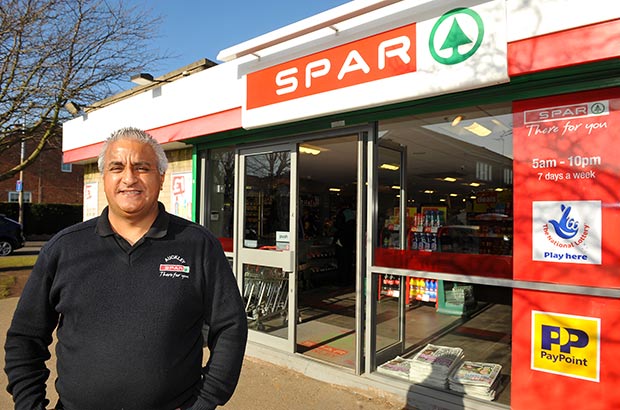One of the key processes that I undertake in my store is Category Management. CM means that I systematically look at the performance of every bay in my store on a regular basis.
My store operates under the Spar fascia with AE Blakemore as our supplying wholesaler. This gives me access to their entire planogram library.
Blakemore’s use these planograms across their 300 company owned stores. The way I look at it, if it works for them and they are one of the most successful convenience retailers in this country then I’m sure they’ll work in my store too.
I am always mindful that just because my customers are buying a particular item from my shop doesn’t mean that’s what they came in for! The way I look at it is, am I really giving great customer service if they are going out with a second choice product? Market trends move all the time, and it is my duty to ensure I am on top of this and constantly adjusting our range accordingly.
These planograms are a great place to start as it instantly lets me see what are the best selling and most profitable lines in that category. However, they do need some work to personalise them for my stores needs. The ingredients I put into the mix are our own sales data captured by our POS tills, product information published in the trade magazines, range checks at the supermarkets plus any helpful information that manufactures reps may tell me.
First, I look at my sales date and see what are the top and bottom selling lines, this gives me a good indication of any changes in patterns or trends.
The poor sellers that this analysis reveals have to be dealt with. Delisting these lines and selling them off gives me the space needed to bring new lines in. I always want the best selling range in each category all the time. Regularly culling the poorest sellers means that each time I review a category planogram that Blakemore provides it’s likely to have some of these delisted lines in it.
To avoid these gaps on my shelves I look at the next size up planogram and choose from these extra best sellers to strengthen the range. For instance the 2 metre laundry bay planogram offers around 20 more suitable products than the 1 metre laundry bay planogram. I find industry based planograms like ShelfHelp are a very useful source of information when constructing the right range.
One of the big problems that independent store owners like me can suffer from is to become attached to the products we stock. We can easily make the mistake that we are servicing the needs of our customers. As we’re in our shops a large portion of the day, we can sometimes fail to see what the outside world is doing and may be a bit too slow to react to change.
However, with a regular program to analyse and change each category in my shop I know that I won’t let this happen to me.
Planograms are the foundation I use in managing each category. As the owner I have to make they work for me and my customers. For me compliance with industry based planograms is the route to increasing sales and profitability.



Comments
This article doesn't have any comments yet, be the first!